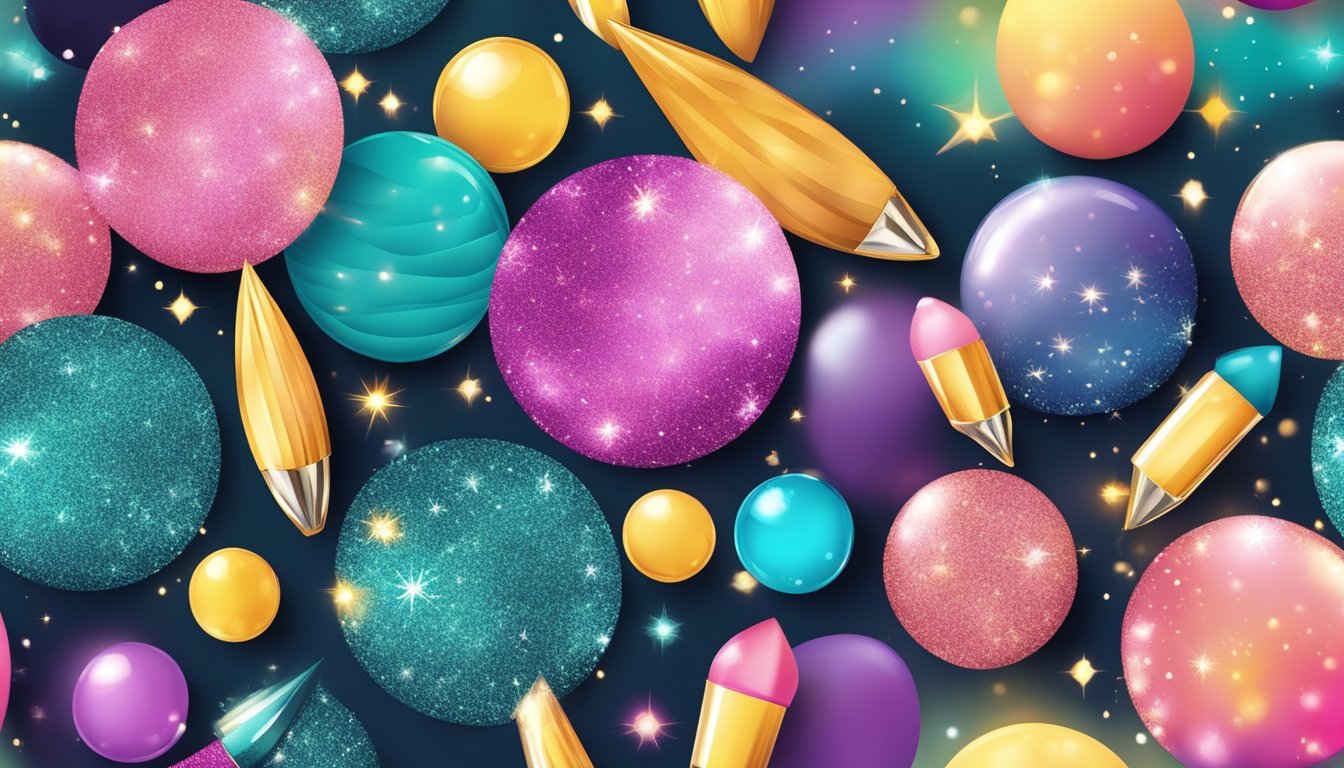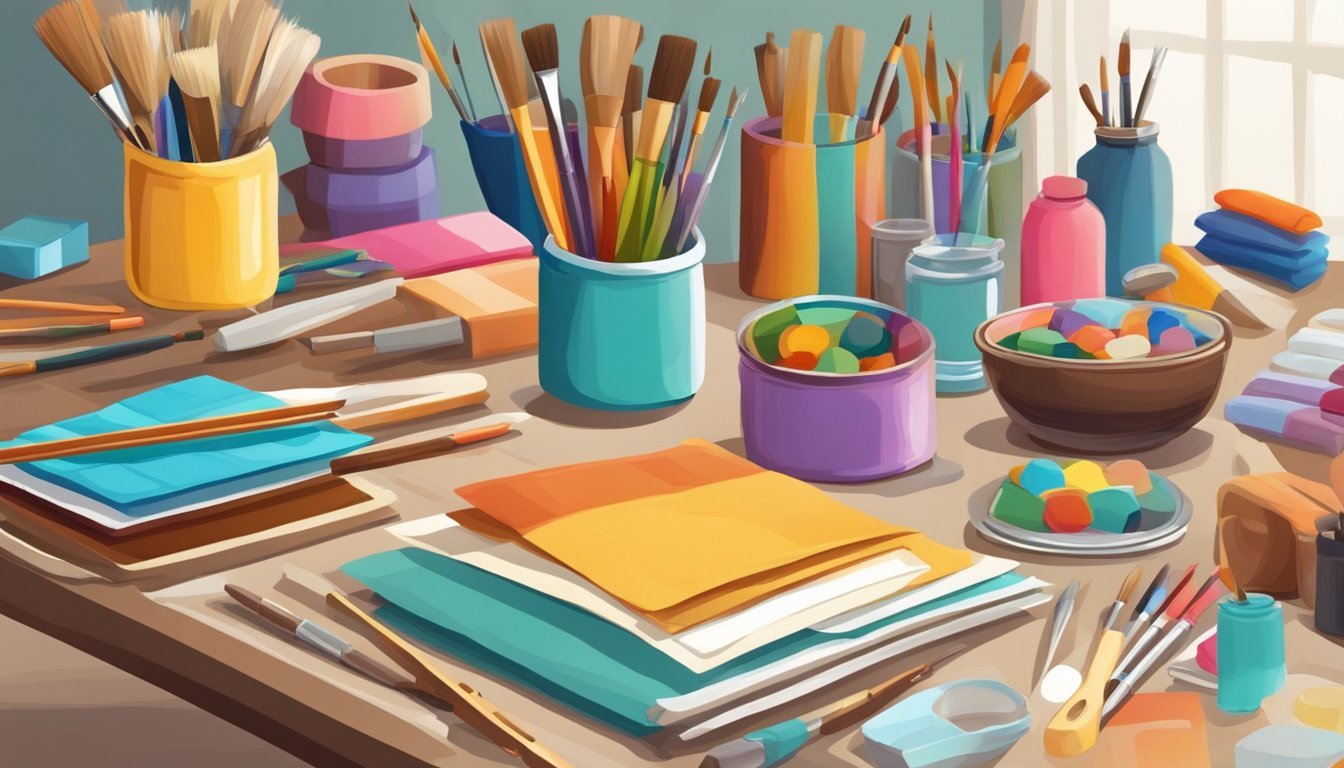Getting creative with crafts can be a fun way to express yourself and breathe new life into your projects.
Whether you’re an experienced crafter or just starting out, adding color and style can elevate your creations to a whole new level.
You don’t need to be a professional artist to incorporate vibrant techniques into your work; simple changes can make a big difference.

From fabric dyeing to unique painting methods, there are numerous ways to enhance your craft projects.
Engaging with these techniques can not only improve the visual appeal of your items but also bring a personal touch to your crafts.
So, let’s dive into some easy and effective ways to add that splash of color you’ve been looking for.
Use vibrant fabric paints
Using vibrant fabric paints can completely transform your craft projects.
These paints are specially designed to adhere to various fabrics, giving you bold colors that last.
Start by choosing a bright base color for your project.
Fabric paints come in a range of shades, so pick one that catches your eye.
You can layer colors for more depth, too.
Don’t forget to experiment! Mixing colors can lead to unique shades that make your crafts stand out.
Try adding black or white to adjust the tone until you find the perfect match.
Applying fabric paint is easy.
Use brushes, sponges, or even stencils to create your designs.
The possibilities are endless, from simple patterns to intricate artworks.
Once you’re done painting, let your creation dry completely.
This ensures the colors set well and won’t fade quickly.
Vibrant fabric paints not only add color but also personality to your crafts.
They let you express yourself in creative ways, making every project uniquely yours.
Incorporate metallic markers
Metallic markers can elevate your crafts with a touch of shine.
They come in various colors, allowing you to add reflective highlights to your projects.
Use these markers on dark paper for striking contrasts.
The sparkle stands out beautifully, making your designs pop.
You can also layer metallic ink over other colors for added depth.
They’re great for detailing, too.
Whether you’re adding patterns, outlines, or special effects, metallic markers bring an extra flair.
They are easy to control, making them perfect for intricate work.
If you’re working on greeting cards, invitations, or scrapbooking, these markers are a perfect choice.
The metallic finish complements your handmade touches and can make your creations feel more polished.
Experiment with different brands and types.
There are gel pens and permanent markers available, each with its unique effect.
Just remember to let the ink dry to avoid smudging.
Incorporating metallic markers into your crafting routine can make a simple design shine and impress anyone who sees it.
3) Try tie-dye techniques
Tie-dye is a fun way to add vibrant colors to your crafts.
It’s easy to get started, and you can create unique patterns with just a few simple techniques.
One classic method is the spiral technique.
Lay your fabric flat, pinch the center, and twist it clockwise.
Use rubber bands to secure it and create sections for dye application.
Another popular style is the crumple or scrunch method.
Scrunch up the fabric randomly and wrap rubber bands around the gathered sections.
This will give you a beautiful, abstract design.
If you prefer straight lines, try the accordion fold.
Fold the fabric in an accordion style and use rubber bands to hold the sections together.
Apply dye to each section for a striped effect.
Feel free to experiment with different colors and fabric types.
Cotton works best, as it absorbs dye effectively.
Don’t hesitate to mix and match techniques to achieve the look you want.
Tie-dyeing offers endless possibilities for creativity!
4) Add some glitter accents

Adding glitter accents can really elevate your crafts.
It brings a fun sparkle that catches the eye and adds personality.
You can sprinkle glitter onto cards, bookmarks, or almost any craft project.
Using a glitter glue can help to apply it neatly without the mess.
For a more controlled look, use a fine tip glue bottle to create designs or write messages.
This technique allows you to add glitter precisely where you want it.
If you want to make your projects pop, consider accenting edges or highlighted text with glitter.
It adds depth and can transform simple designs into something special.
This material works well with various surfaces, too.
Try it on journals, photo albums, or even home décor items for a trendy touch.
Remember to seal your glittered projects if you want them to last longer.
A spray sealant can help keep everything in place without dulling the shine.
Enjoy adding that touch of sparkle to your creations!
Experiment with embroidery
Embroidery is a fantastic way to inject color and style into your crafts.
It allows you to add intricate designs and personal touches to any fabric project.
Start by experimenting with different stitches.
Use long and short stitches to create textured effects in your designs.
This can make flowers or wildlife come alive in your work.
Don’t hesitate to play with colors.
Blending shades can bring depth and vibrancy to your projects.
Choose a palette that resonates with you, and explore color combinations.
Consider dyeing your embroidery thread.
This lets you achieve custom shades that perfectly match your vision.
Keeping a dyeing journal can help you track successful mixes for future projects.
Use tools like crayons or colored pencils for tinting.
Apply these directly to your fabric design to create a unique look before you start stitching.
Finally, remember that there’s no right or wrong way to experiment.
Enjoy the process and let your creativity flow freely.
Your embroidery journey can be as colorful as you make it!
6) Use colorful washi tape

Washi tape is a fun and versatile tool that can instantly brighten up your crafts.
You can find it in endless colors and patterns, making it easy to match it to any project.
Consider using washi tape to decorate notebooks, planners, or scrapbooks.
A little touch goes a long way in adding personality to your stationery.
Washi tape also works well for creating custom bookmarks.
Just cut a small piece, fold it over the end of a paper clip, and you have a colorful bookmark.
You can even enhance household items with washi tape.
Use it to jazz up picture frames, or add a pop of color to storage boxes.
If you want to label things, washi tape makes for easy, removable labels.
You can write on it with a pen or marker, making your organization both functional and stylish.
It’s easy to apply and remove, so feel free to experiment with different designs without worrying about residue.
You’ll find that adding washi tape to your crafts is a simple way to inject creativity and flair.
7) Layer with Decoupage Paper

Decoupage paper is a fantastic way to add color and style to your crafts.
It’s versatile and works on a variety of surfaces, including wood, furniture, and home decor items.
Start by selecting your decoupage paper.
You can choose from patterned, textured, or solid colors.
This allows you to customize your project to your liking.
Before applying, make sure your surface is clean and primed.
Trim the decoupage paper to size and arrange it as you like.
You can layer different papers for a unique look.
Apply a layer of decoupage medium or thinned glue to the surface.
Place your paper on top and gently smooth it out, removing any bubbles.
Once dry, seal it with another layer of decoupage medium or varnish for durability.
This not only enhances the color but also ensures your design lasts.
With decoupage paper, you can easily transform everyday items into stunning, personalized pieces.
Enjoy getting creative with your layers!
Understanding Color Theory

Color theory is a fundamental concept that can elevate your crafting skills.
It helps you understand how colors interact, blend, and evoke emotions, adding depth and style to your projects.
Basics of Color Wheel
The color wheel is a visual representation of colors arranged according to their chromatic relationship.
It’s typically divided into primary, secondary, and tertiary colors:
- Primary Colors: Red, blue, and yellow. These cannot be created by mixing other colors.
- Secondary Colors: Green, orange, and purple. These are formed by mixing primary colors.
- Tertiary Colors: A mix of a primary and a secondary color, like red-orange or yellow-green.
Familiarizing yourself with the color wheel lets you easily identify complementary and analogous colors.
This knowledge is essential for selecting color combinations that create visual harmony in your crafts.
Harmonizing Color Schemes
Creating a harmonious color scheme involves pairing colors that work well together.
Here are some popular strategies to consider:
- Complementary Colors: These are opposite each other on the color wheel (e.g., blue and orange). Using them can create a vibrant contrast.
- Analogous Colors: These are next to each other on the wheel (e.g., red, red-orange, and orange). They provide a more subtle, cohesive look.
- Triadic Colors: Choosing three colors evenly spaced on the wheel (like red, yellow, and blue) can offer balance and vibrancy.
Experimenting with these schemes allows you to create mood and interest in your crafts, making your projects stand out.
Use color swatches to test combinations before committing to a design.
Styling Crafts with Patterns

Using patterns in your crafts can add visual interest and elevate your projects.
With the right techniques, you can effortlessly mix and match different designs to create something truly unique.
Mixing Patterns Effectively
Mixing patterns may feel tricky, but a few guidelines can help you create a cohesive look.
Start by balancing the scale of your patterns.
Combine a large-scale print, like a bold floral, with a smaller pattern, such as tiny polka dots.
This contrast creates harmony.
When selecting patterns, aim for an odd number.
Three different designs often work best together.
Consider pairing geometric patterns with more organic florals for added depth.
Remember to keep the colors somewhat coordinated to avoid a chaotic feel.
Lastly, don’t hesitate to incorporate solid colors to break up busy visuals, making your overall design easy on the eyes.
Using Texture for Depth
Texture plays a crucial role in enhancing your patterns.
Mixing fabrics with various textures helps achieve a richer look.
For example, combining linen, cotton, and felt can create a tactile experience in your crafts.
Layering textures invites interaction.
You can pair a smooth patterned fabric with a rougher texture like burlap.
This contrast not only emphasizes the patterns but also adds dimension.
When working with multiple textures, consider a color palette that ties them together.
Neutral bases with pops of color can help unify your project.
Thoughtfully selecting and layering textures can help you create visually appealing crafts that captivate attention.


